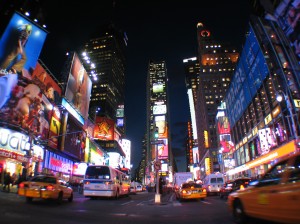
The ISS streaks across the sky over Sandbanks in Dorset, England. Image courtesy Chris Daborn/Flickr Creative Commons.
On some clear nights, if looking up at the night sky, one might catch a glimpse of bright shining objects moving rapidly across the atmosphere, flashing in the dark like a collection of short-lived falling stars. This object is the International Space Station, its hulking football-field-sized metal frame and solar panel array reflecting light from the sun back to Earth.
On Tuesday, March 25th, 2014, American astronaut Steve Swanson and two Russian cosmonauts blast off in Russia’s Soyuz spacecraft, heading to the International Space Station (or ISS for short) to take their place as part of the crew for six months. NASA joyfully tweeted through their NASA_Astronauts Twitter handle, “And follow #Swanny as he becomes first @NASA_Astronaut to Instagram from space!”
Not only will Steve “Swanny” Swanson Instagram from orbit aboard the ISS, he and his fellow crew mates use the internet, heat up their food, and breathe oxygen pumped throughout the station. All these tasks require power, but in space there are no coal plants or fossil-fuel burning electric plants, which contribute to global warming and dramatic upheaval for life where these kinds of energies do exist here on Earth. Instead, the ISS relies on the aforementioned solar array of eight panels to generate all energy needs during the typical sixth month stay of an astronaut on the ISS, which has been inhabited continuously by human crew members since November 2nd, 2000.
That means for over a decade, the ISS has relied solely on space-based solar power to operate.



